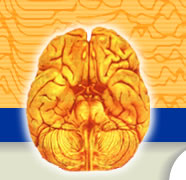 |
||||
|
||||||||||||||||||||
|
|
||||||
Traumatic brain injury (TBI) can present as interrelated problems of neurophysiological imbalance and incoherence. Even ‘mild’ TBI can have devastating effects on the injured individual as well as the family. Optimal treatment of brain injured individuals requires an integrated, holistic approach to the possible wide spectrum of cognitive, emotional, and behavioral dysfunction. In addition to the specific sensory-motor dysfunctions associated with various TBI, there are four major areas of cognitive function that can be effected in many TBI individuals. These include: 1) reduced goal-directed behavior, 2) lower motivation, 3) reduced self-awareness, and 4) reduced emotional activation [1, 2]. Recovery from TBI can also be associated with a variety of mood disorders, such as depression, anxiety, irritability, frustration, and mood lability. Effective treatment is needed to help restore balance to the mind and body. Unfortunately, standard cognitive therapy and other conventional modes of rehabilitation have little scientific support to indicate significant impact on TBI recovery [3]. These conclusions indicate the need for more effective treatment modalities that can be scientifically documented to provide positive benefit.
Outcomes of injured individuals rely on diagnostic and prognostic information obtained soon after injury in order to optimize treatment and rehabilitation. Trauma can impact specific cortical and subcortical areas and/or result in diffuse, nonspecific axonal injury. The pioneering work of Robert Thatcher and colleagues [4, 5] show that the best predictors of recovery outcome are based on electroencephalographic (EEG) variables, in particular, EEG coherence and phase. Measures of brain coherence play fundamental roles in brain integration and function and are directly and strongly correlated with the rate and extent of TBI recovery.
Early studies of Thatcher and colleagues over the last 15 years supported the subsequent growth of quantitative EEG (QEEG) in the evaluation and understanding of TBI [4]. These methods have, in turn, supported the therapeutic use of EEG biofeedback or neurobiofeedback to entrain specific brain rhythms during rehabilitation. Although neurobiofeedback appears to offer some benefits, its application to TBI recovery remains largely undocumented. In addition, there may be some ground for concern about the consequences of manipulating specific frequency bands in the brain activity of the TBI individual. Finally, even in the face of reported frequency-specific benefits from neurobiofeedback, a natural, holistic program is needed to enhance integration of all aspects of brain function for the TBI individual.
Another approach likely to facilitate recovery is the use of a proper meditative technique to enliven in a natural way the endogenous neural feedback and homeostatic mechanisms. Meditation techniques have gained increasing acceptance over the last 30 years as complementary or alternative modes of restoring physiological and psychological imbalance, as well as reducing acute and chronic disorders. Thus, a mental approach has been used to help to reverse the physiological, psychological, and behavioral incoherence that can result from brain injury.
Over 600 research studies show rapid and accumulative benefits from the practice of the Transcendental Meditation (TM) technique in nearly every area of mind-body function [6-8]. Meta-analysis studies, comparing over 500 studies on different forms of relaxation, stress control and meditation, show the TM program is, by far, the single most effective means of eliminating stress and re-balancing the functioning of mind and body [9]. The TM technique produced a greater benefit than any other meditation or relaxation technique in areas of anxiety, high blood pressure, substance abuse, self-actualization, etc. The technique is also simple and natural. The TM technique is easy to learn and to practice, and is very enjoyable. Successful practice of the TM technique does not require intellectual ability, motivation control, philosophical understanding, cultural or religious belief, or any change in lifestyle.
|
Based on extensive neurophysiological and psychological research, as well as numerous studies on substance abuse and violent behavior, the TM technique offers any individual the ability to dramatically, and in an integrated, holistic manner, increase brain coherence and function. The twice daily 20-minute practice of the TM technique produces a unique state of brain functioning that can help counteract stress and disorder arising from TBI. One can predict that the inclusion of the TM technique as a complementary therapeutic modality should, by naturally and effortlessly increasing brain coherence and integration, facilitate the rate and extent of recovery from TBI. Thus, the TM technique should be examined for its potential benefit in the rehabilitation of individuals with TBI as soon as possible following the accident. |
|
|
Home | Contact Us |
||